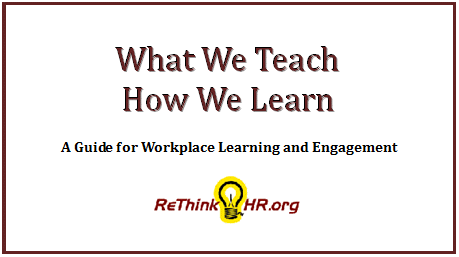AS A TRAINER, I have always used various approaches to help get people engaged. We all know that this can be a difficult feet. For those of us that have been doing it for years we don’t see the big deal. It’s simple isn’t it? Ultimately you use what best fits your personality, meshes with the audience that you are presenting to, and what can ultimately reflect the message and learning you are trying to reinforce. Am I right? Media, should reinforce and appeal to the content you are presenting and ultimately to your audiences senses. In order to do this it helps to be aware of the types of learners. Before I present a few of the cartoons I love and use, here are some of the typical types of learners.
VISUAL LEARNERS: They learn primarily through the written word and tend to be readers who diligently take down every word. These people often get carpal tunnel.
AUDITORY LEARNERS: They learn primarily through listening. They focus their ears and attention on your words, listening carefully to everything you say. They like to talk rather than write and relish the opportunity to discuss what they’ve heard. Funny how an auditory learner who needs to learn through listening often talks more than listens!
KINESTHETIC LEARNERS: These learners learn better by doing. This group learns best when they can practice what they’re learning. They want to have their hands on the keyboard, the hammer, or the test tube because they think in terms of physical action. So for those of you who don’t like role-plays, shut up, watch and listen ![]()
So for all you learners, here are the cartoons that I like to use that can also prove a point for HR and Learning (dependent upon your audience, interpretation and content):
Catbert - Drug Test (left): Pretty pointed but I have used this in training to prove a point to my fellow colleagues on how confusing messages are being presented. Like some marriages, we say we love you but first, let’s get a prenuptial agreement. Definitely conditional.
Farside - Damned if You Do/Don’t (right): This one has dual meaning for any piece of content, class or organization/department. We have all been in situations where, regardless of the choice we make, the choice may not be a good one. Sometimes it is just about choosing the better of the two evils. Outside of what the cartoon states, it’s not “easy.” Do you know anyone that has never been in this situation? I don’t.
Dilbert - Ahhh motivation (left): In this economy it is difficult to keep a positive attitude. Instead of just trying to SAY that everyone needs to keep a positive attitude, why not just call it like we see it! You are in a cube, there are many times you feel undervalued and underpaid. OK, we got it out, now what do you do? Clear the air, accept it and take actions to change and improve the situation. People give you a lot of current attitudes in a classroom. The key is to call it the way it is and then move on to something productive.
Farside - What we say, What we hear (right): I think this is great for any communication, conflict resolution, or emotional intelligence type class. There can often times be a disconnect between what we say, how it is translated and what we hear. In my opinion, the key is more about identifying this insufficiency to understand others rather than just outlining the challenges that are faced in communication.
The Traditional Approach to Employee Motivation (left): One of my favorite of all time. I found this one years back and have used it in a variety of programs and presentations. The key for companies and those of us in HR and Training is that this is the traditional approach. Some individuals and brands are stuck in this mindset. We need to move away from the mindset as well change our actions toward the people we interact with.
Farside - Interaction (final): This one has some duality to it. You could use this to convey ideas on interactions between departments and people. It can help reinforce how others may not know how their actions are affecting the environment they are in. I would say that within learning sometimes we get angry at the other parts of the business and rage war. We will only interact with those that share the same perspective and if they don’t follow suit then we, subconsciously attack them for not wanting to answer our questions. You must remember that we provide value. That while we contribute to that value we do not own the value. But that’s my opinion.
You may also like the following:
Comments
Powered by Facebook Comments


